El Centro Español de Tampa
Introduction
Text-to-speech Audio
This large and beautiful redbrick structure is one of the few remaining buildings in Tampa still standing associated with Spanish migration (largely from Spain and Cuba) to Florida during the late 19th and early 20th centuries. Known as the El Centro Español de Tampa, the building was erected in 1912 to replace the smaller one built in 1891. It served the new arrivals and Ybor City residents as a mutual aid society, a clubhouse and cultural center. In more recent years it served as a home for a restaurant and school programs. For its This was one of two such structures in Tampa; the other is El Centro Español of West Tampa.
Images
This 1927 photo of 7th Ave. shows the El Centro Español de Tampa in the background
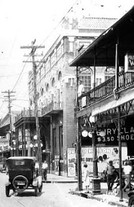
Interior of the theatre after restoration
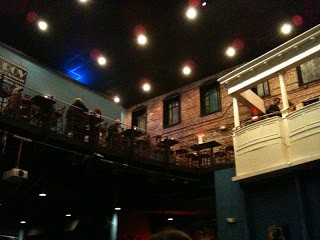
Stage of theatre during restoration
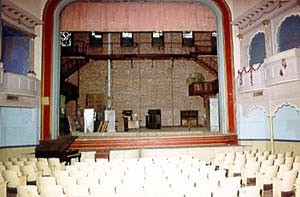
El Centro Español de Tampa in 1914
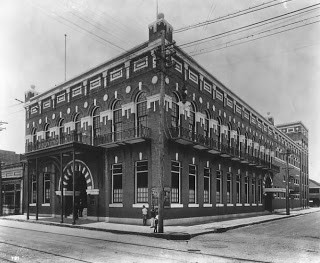
El Centro Español de Tampa today

Marker for El Centro Español de Tampa
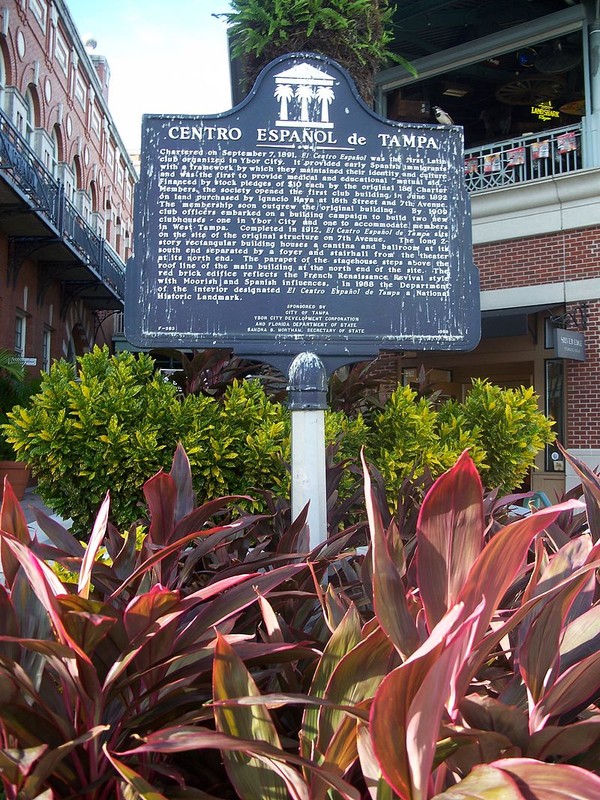
Entranceway to El Centro Español de Tampa. Note the Moorish influence in the architecture.
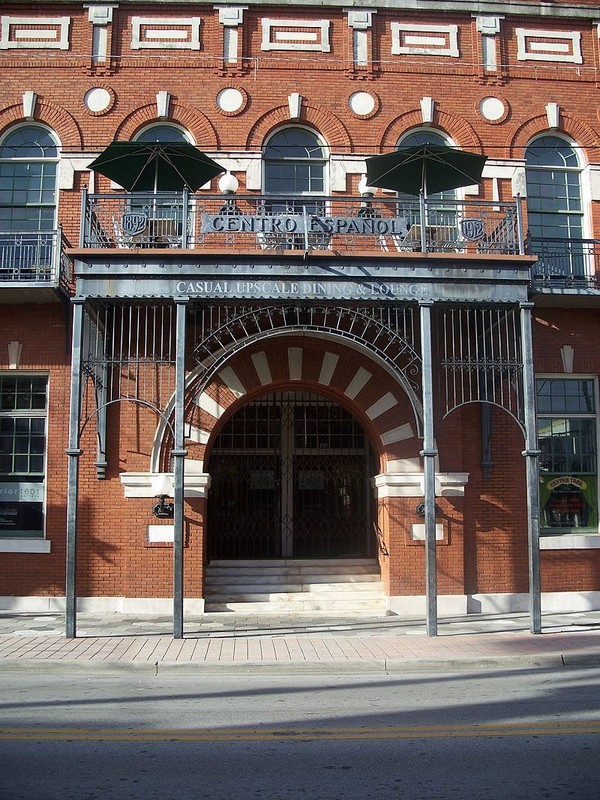
Backstory and Context
Text-to-speech Audio
In 1891, Spanish immigrants banded together to create social aid and cultural organizations for residents and arrivals from Spain, Cuba and other Spanish-speaking Latin nations. This particular society building was to serve as a model for others that were planned for the future in Ybor City, Tampa and other areas of Florida with similar large ethnic communities. Other such buildings to come into fruition include El Centro Asturiano and El Circulo Cubano.
Besides greeting and orienting new arrivals, new arrivals were offered social, cultural, recreational, educational services and healthcare after paying membership dues. Soon after in 1904 the society built their own hospital, which would become one of the top medical facilities in Florida at the time. A clubhouse was built in 1892 and included a dance hall, theater, a canteen, soda fountains and classrooms that offered English courses. The 1891 building became too small for the growing membership and a new, larger one we see today was constructed in 1912.
As Prohibition, the Great Depression, the curtailment in immigration and WW2 took place, membership declined and the need for such a society was replaced by the descendants of immigrants and newer ones choosing to associate outside their cultural communities. In 1983 the society consolidated into one and relocated to the West Tampa building. Since then it was vacant until in 2010 it was restored and used as a restaurant and a school for programs through Hillsborough County. In 1988, the building was added to the National Register of Historic Places and designated a National Historic Landmark.
Sources
Charleton, James H. "El Centro Español de Tampa." National Park Service - National Register of Historic Places Nomination Form. June 3, 1988. https://npgallery.nps.gov/AssetDetail/NRIS/88001823.
Rajtar, Steve (2007). "The 1900s". A Guide to Historic Tampa. The History Press. p. 63 Staff (2010-07-09).
